Over 1 billion people worldwide lack enough vitamin D, which is key for health. Levels below 30 nmol/L (12 ng/mL) can lead to serious issues like rickets in kids and osteomalacia in adults. This guide will show you the health perks of vitamin D, signs of deficiency, and its role in our bodies.

Vitamin D is important for strong bones and a healthy immune system. Knowing how it’s made and its benefits helps you take care of your health. Let’s find out how to avoid deficiencies and use vitamin D to our advantage.
Table of Contents
Understanding the Importance of Vitamin D
Vitamin D, also known as the “sunshine vitamin,” is key for our bodies. It helps us absorb calcium and boosts our immune system. Sadly, about one in four people in the U.S. don’t have enough vitamin D. This can harm our bones and overall health.
Vitamin D is important for strong bones. We need levels of 50 nmol/L (20 ng/mL) or higher to keep bones healthy. If levels drop below 30 nmol/L (12 ng/mL), bones can weaken. This can cause osteomalacia in adults and rickets in kids. Long-term lack of vitamin D can also lead to osteoporosis in older adults.
To keep vitamin D levels up, we need to eat foods rich in it and get enough sunlight. But some people, like older adults and those with darker skin, might find it hard. Breastfed babies also need a daily supplement of 10 mcg (400 IU) because breast milk isn’t enough.
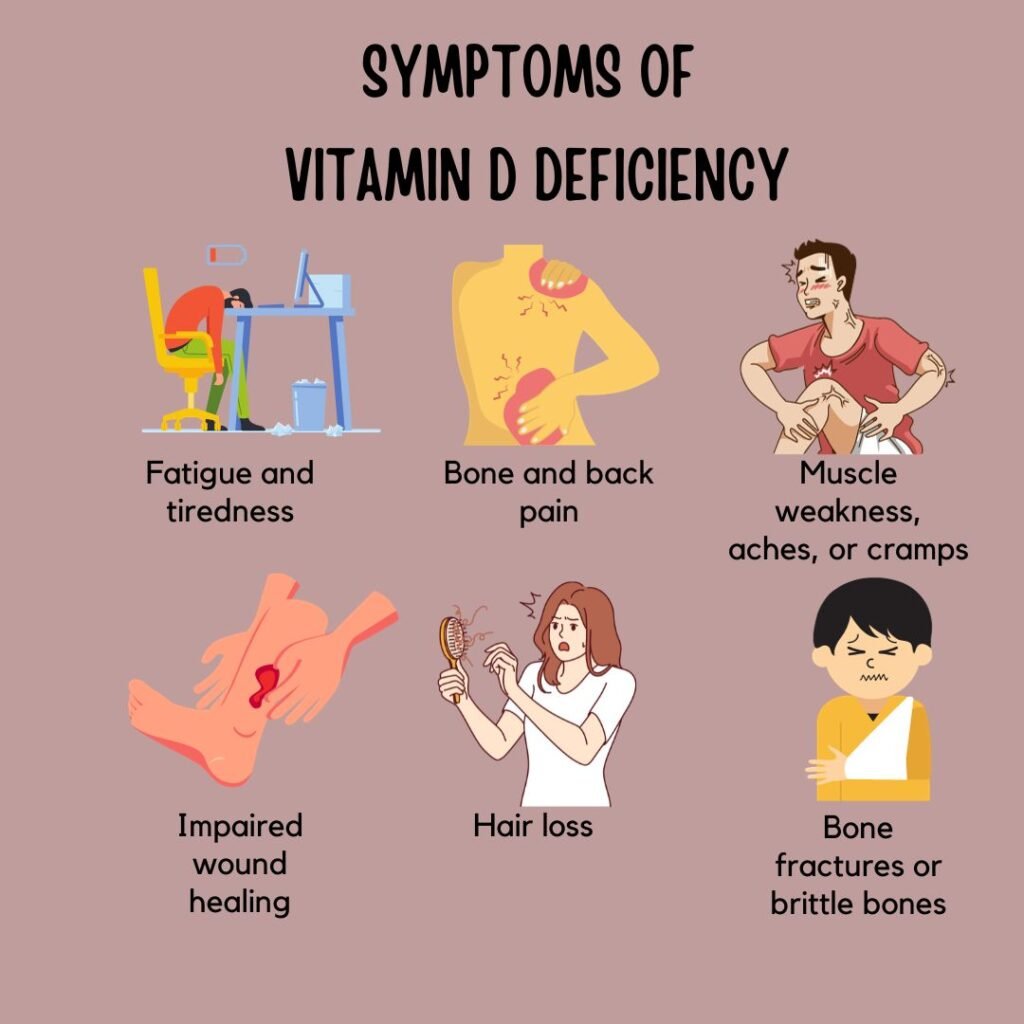
- Health benefits of maintaining proper vitamin D levels include:
- Supporting bone health and reducing fracture risk
- Enhancing immune system function
- Potentially lowering the risk of certain chronic diseases
- Stabilizing mood and mental health
Not having enough vitamin D can cause serious health problems. It’s important to know how vital it is. Regular checks and changes in diet are key for those at risk.
Health Benefits of Vitamin D
Vitamin D does more than just keep us healthy. It protects us from diseases like multiple sclerosis, heart disease, and severe respiratory illnesses. It’s especially important for people over 50 or living in northern areas.
Vitamin D also helps with mood. Studies show it can help with depression and anxiety. This is great for those dealing with mental health issues, as it can improve their mood.
- Promotes immune function, potentially reducing the risk of infections.
- Contributes to weight management by influencing hunger levels and calorie consumption.
- Improves physical performance, especially in individuals who are vitamin D deficient.
- May lower the chances of certain cancers, particularly in African American populations.
It’s key to keep vitamin D levels up. You can do this with daily supplements, eating right, and getting some sun. These steps can boost your health.
| Health Aspect | Vitamin D’s Role |
|---|---|
| Disease Prevention | Reduces risk of multiple sclerosis, heart disease, and respiratory illnesses |
| Mood Regulation | Alleviates symptoms of depression and anxiety |
| Weight Management | Reduces hunger and calorie intake when taken with calcium |
| Physical Performance | Enhances performance and reduces injury risk, especially in deficient individuals |
Vitamin D and Bone Health
Vitamin D is key for strong bones. It helps our bodies absorb calcium and phosphorus. These minerals are vital for bone health. Without enough vitamin D, bones can become soft and deformed.
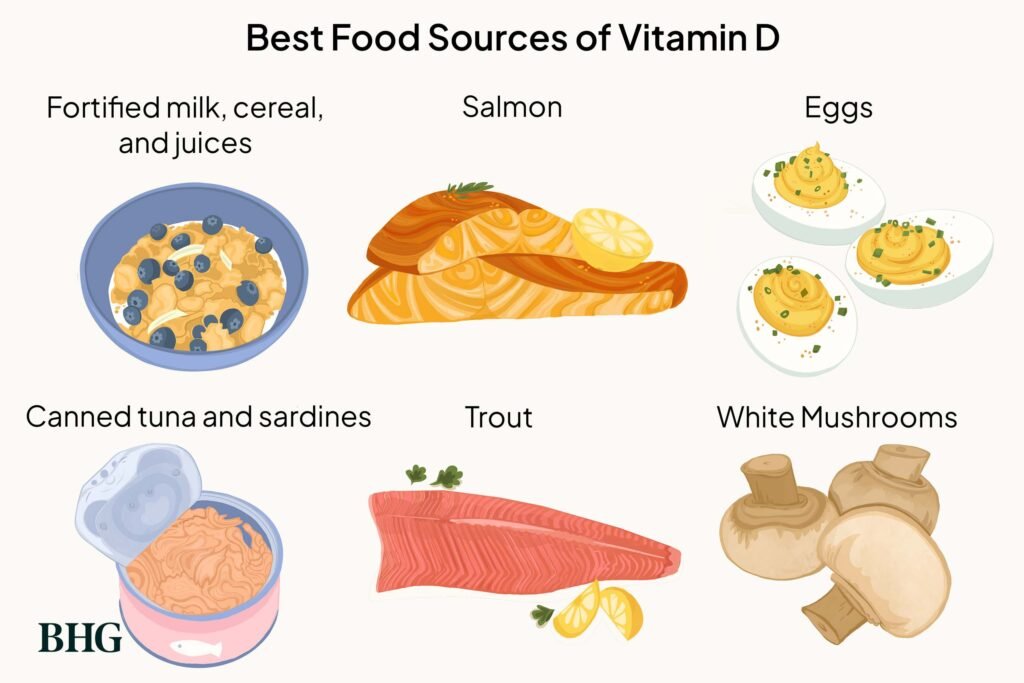
Bone Development and Growth
For kids, vitamin D is crucial during growth. It helps bones develop properly. Without it, bones may not mineralize well, leading to rickets.
Rickets causes weak bones and growth problems. It’s important to get enough vitamin D to support bone growth.
Prevention of Osteomalacia and Rickets
Osteomalacia makes adult bones soft due to vitamin D lack. It increases fracture risk and causes pain. Rickets, mainly in kids, results from low vitamin D, causing bone deformities and growth delays.
Ensuring everyone gets enough vitamin D is key. It strengthens bones and prevents these conditions.
| Condition | Age Group Affected | Symptoms | Vitamin D Required |
|---|---|---|---|
| Osteomalacia | Adults | Bone pain, muscle weakness | 800-1000 IU |
| Rickets | Children | Bone deformities, delayed growth | 400-600 IU |
Vitamin D’s Role in Immune Function
Vitamin D is key to a strong immune system. It helps the body fight off infections and makes illnesses less severe. Studies show that vitamin D keeps the immune system strong, protecting against many diseases.
Enhancing Immune System Response
Vitamin D boosts the immune system. People with enough vitamin D fight off colds and flu better. It makes immune cells work better and keeps the body’s defenses strong.
Having enough vitamin D lowers the chance of getting sick often. It also helps prevent long-term health problems linked to weak immunity.
- RAW VITAMIN D 5000 IU: Whole food nutrition, specifically formulated with 5,000 IU of fat-soluble Vitamin D3 delivered i…
- THE SUNSHINE HORMONE: Vitamin D supports memory, concentration & proper cell replication; Easily metabolized D3 is prefe…
- ONCE DAILY VITAMIN D3 FOR IMMUNE SYSTEM HEALTH: Our vegetarian Vitamin D supplement supports bone, joint, breast & prost…

Potential Impact on Autoimmune Diseases
Not having enough vitamin D might lead to autoimmune diseases. These include multiple sclerosis and type 1 diabetes. People with these diseases often have very low vitamin D levels.
Vitamin D helps keep the immune system in check. It also helps prevent rheumatoid arthritis. This shows vitamin D’s role in fighting off autoimmune diseases.
| Condition | Vitamin D Level Effect | Study Reference |
|---|---|---|
| Upper respiratory infections | Lower risk with adequate levels | NHANES Survey |
| Multiple sclerosis | Lower incidence with higher serum levels | Neurology Journal |
| Type 1 diabetes | Lower levels at diagnosis | Diabetes Research |
| Rheumatoid arthritis | Inverse correlation with intake | Arthritis & Rheumatology |
Scientific Studies Supporting Vitamin D Benefits
Many studies have shown the health benefits of vitamin D. It’s key in preventing rickets in young ones, helping their bones grow right. This is especially important in early life.
Research says older adults need more vitamin D for strong bones. Big studies like VITAL, ViDA, and D2d looked at over 30,000 people. They found vitamin D doesn’t stop cancer or heart problems in people who already have enough.
But, studies suggest vitamin D can slow down bone loss and improve lung health in those who lack it. Some studies linked low vitamin D to a higher risk of multiple sclerosis. This shows why keeping vitamin D levels up is crucial.
A big study found vitamin D might lower cancer death rates. The “Vitamin D status: United States, 2001-2006” study by Looker et al. looked at vitamin D levels in Americans. Other research by Moore et al. and Brot et al. helped us understand vitamin D in different groups.
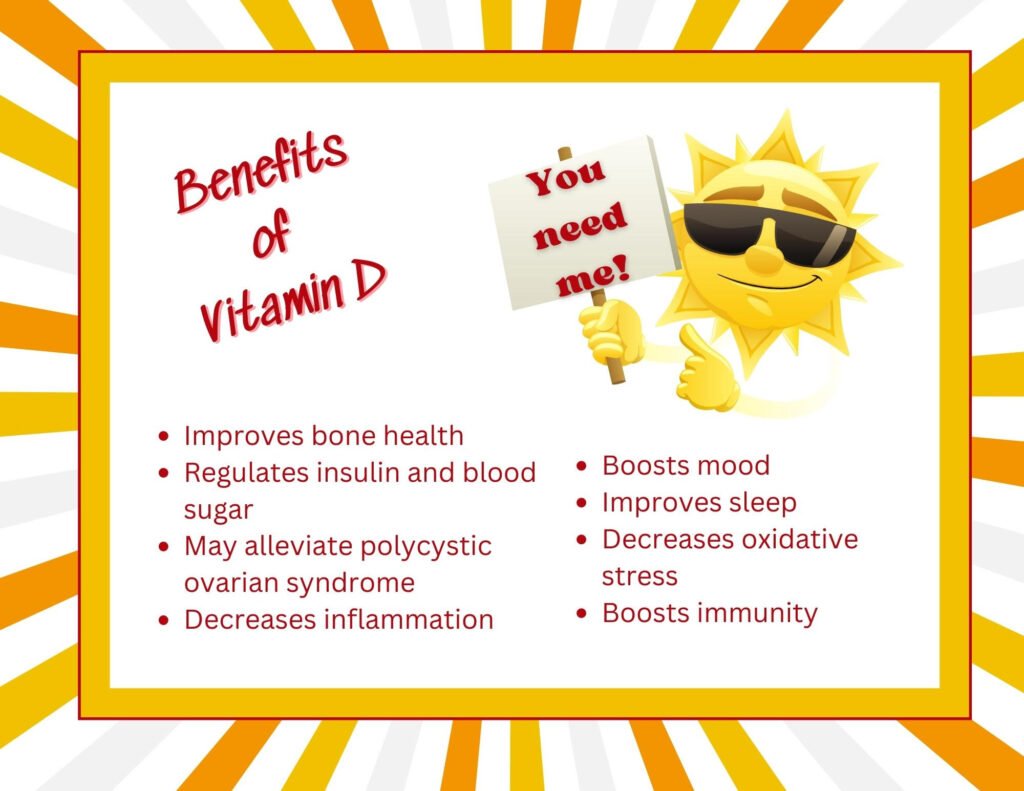
| Study | Findings |
|---|---|
| VITAL, ViDA, D2d Trials | No preventive effects on cancer or cardiovascular events in vitamin D-replete adults |
| Looker et al. (2001-2006) | Analysis of U.S. population’s vitamin D status |
| Pfeifer et al. (2009) | Effects of long-term vitamin D and calcium supplementation on falls and muscle function |
| Matsuoka et al. (1988) | Chronic sunscreen use led to decreased circulating 25-hydroxyvitamin D |
| Moore et al. (2004) | Focused on vitamin D intake trends in the United States |
| Brot et al. (2001) | Vitamin D status among healthy Danish perimenopausal women |
| Vanlint et al. (2011) | Documented vitamin D insufficiency in Aboriginal Australians |
These studies highlight the need for more research on vitamin D. They show its wide-ranging health benefits and how it impacts our overall well-being.
Signs and Symptoms of Vitamin D Deficiency
Vitamin D deficiency is common in both adults and children. It’s important to know the signs and symptoms early. This helps in treating it and improving health.
Common Deficiency Symptoms in Adults
In adults, vitamin D deficiency can cause many symptoms. These might not be noticed at first. Some common signs include:
- Fatigue
- Bone pain or achiness
- Muscle weakness
- Hair loss
- Loss of appetite
- Pale skin
- Frequent illness
About 42% of adults in the U.S. have low vitamin D levels. Non-Hispanic Black individuals are at a higher risk.
Recognizing Deficiency Symptoms in Children
Children with vitamin D deficiency show different symptoms. These can be more obvious. Look out for:
- Skeletal deformities
- Growth issues
- Increased susceptibility to infections
African American infants and children are at a higher risk of rickets. It’s crucial to spot these symptoms early. This helps in preventing long-term problems.
How to Diagnose Vitamin D Deficiency
To find out if you have a vitamin D deficiency, a specific blood test is needed. This test checks the level of 25-hydroxyvitamin D in your blood. It’s key for knowing your vitamin D levels and for making the right changes in your diet or supplements.
The levels of vitamin D in your blood tell us about your deficiency:
- Mild deficiency: Less than 20 nanograms per milliliter
- Moderate deficiency: Less than 10 nanograms per milliliter
- Severe deficiency: Less than 5 nanograms per milliliter
Adults under 65 need about 600 to 800 IU of vitamin D each day. Those 65 and older might need 800 to 1,000 IU daily, especially if they have a deficiency.
Getting tested for vitamin D is a good idea if you have symptoms like bone pain, muscle weakness, or fractures. Keeping your vitamin D levels right is important for your health. If you’re found to be deficient, taking supplements can help. It might take 6-8 weeks to see your vitamin D levels get back to normal.
Getting the right tests and a correct deficiency diagnosis can stop health problems from vitamin D not being enough. Knowing your vitamin D test results can show you how well you’re getting vitamin D from your diet. It can also point out any health issues that need attention.
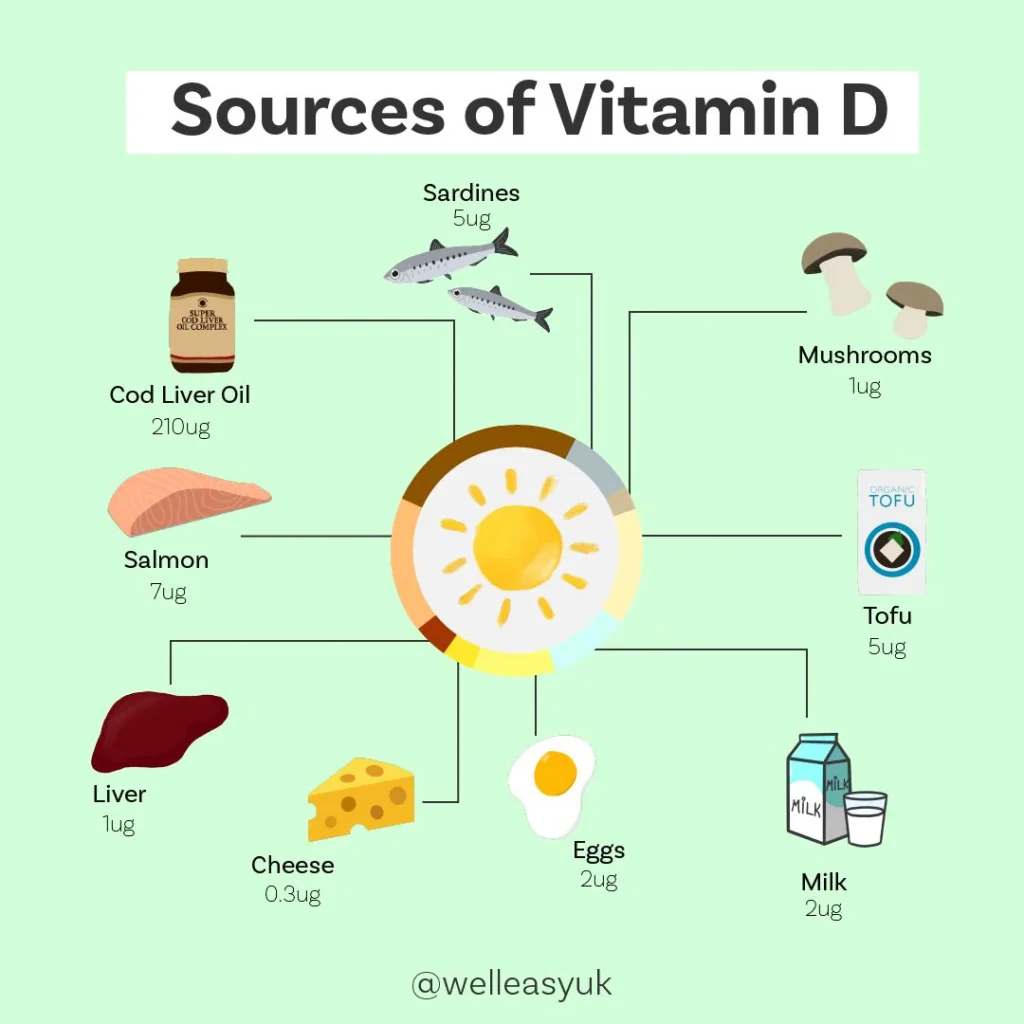
Recommended Dietary Allowance for Vitamin D
The Recommended Dietary Allowance (RDA) for vitamin D is key for health at all ages. Following these guidelines helps ensure people get enough vitamin D. This supports the body’s functions well.
Daily Intake Guidelines by Age
The vitamin D RDA changes with age:
| Age Group | RDA (IU) |
|---|---|
| Infants (0-12 months) | 400 IU |
| Children (1-13 years) | 600 IU |
| Teenagers (14-18 years) | 600 IU |
| Adults (19-70 years) | 600 IU |
| Adults (over 70 years) | 800 IU |
By sticking to these guidelines, people can avoid vitamin D deficiencies. This helps prevent health problems.
Differences for Pregnant and Breastfeeding Individuals
Pregnancy and breastfeeding need more vitamin D. The RDA goes up to 600 IU per day. This supports the health of both the mother and the baby.
Knowing about vitamin D needs during pregnancy and breastfeeding is important. It helps ensure a healthy start for babies and keeps mothers well.
Natural Sources of Vitamin D
Getting enough vitamin D is key for good health. It helps with bone health and fighting off infections. For those who don’t eat meat, finding vitamin D in food can be tricky.
- RAW VITAMIN D 5000 IU: Whole food nutrition, specifically formulated with 5,000 IU of fat-soluble Vitamin D3 delivered i…
- THE SUNSHINE HORMONE: Vitamin D supports memory, concentration & proper cell replication; Easily metabolized D3 is prefe…
- ONCE DAILY VITAMIN D3 FOR IMMUNE SYSTEM HEALTH: Our vegetarian Vitamin D supplement supports bone, joint, breast & prost…

- Vitamin D3: Supports healthy teeth, bones, and muscles, as well as cardiovascular health and immune function
- Optimal Absorption: Vitamin D3 is more potent and better absorbed than vitamin D2
- Nsf Certified: Supports high-performance nutrition programs and is NSF Certified for Sport

- A VITAL NUTRIENT: Vitamin D supports healthy bones, teeth, muscle function, and a strong immune system. Many people may …
- SUNSHINE IN A BOTTLE: The Vitamin D Council recommends daily vitamin D supplementation for most adults to achieve and ma…
- PURE & NATURAL: These Vitamin D3 immune support and bone health supplements are gluten-free and non-GMO. Third party tes…

- Immune, muscle, teeth and bone health support supplement: contains one 180 count bottle of Nature Made Vitamin D3 1000 I…
- Nature Made Vitamin D 1000 IU softgels support bone health, teeth health, muscle health, and provide immune support
- These Vitamin D 1000IU softgels help improve calcium absorption and contain 25mcg of Vitamin D 3, the body’s preferred f…

Top Food Sources for Vegetarians and Vegans
Vegetarians and vegans can get vitamin D from fortified foods and some plants. While fish and eggs are good sources, there are other options:
- Fortified Plant Milks: Soy milk is fortified with vitamin D. It has about 100-119 IU per cup, which is 13-15% of what you need daily.
- Fortified Cereals: Many cereals have vitamin D added. This helps meet your daily needs.
- Mushrooms: Cremini mushrooms, treated with UV light, have about 1,110 IU of vitamin D per cup. They’re great for vegans.
- Fortified Juices: Some orange juices have vitamin D added. This is good for those who don’t eat animal products.
Fortified Foods and Supplements
Fortified foods are important for getting enough vitamin D, especially for those with dietary limits. Besides fortified plant milk, many products now have added vitamin D:
- Fortified Cow’s Milk: It has about 115 IU of vitamin D per cup. But it’s not for vegans.
- Supplement Options: If you can’t get enough vitamin D from food, supplements are available. They come in D2 or D3 forms. This gives you options to meet your needs.
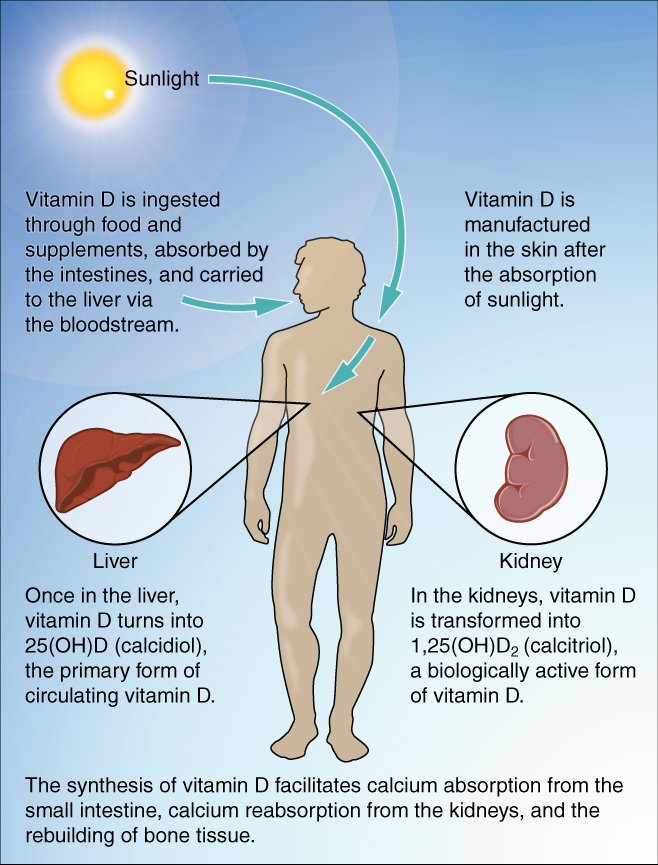
More people now know how important vitamin D is. Finding the right sources and using fortifications can help vegetarians and vegans get enough. It’s a good idea to look at both food and supplements to meet your daily needs.
Vitamin D Supplements: Types and Dosages
It’s key to know the different vitamin D supplements for better health. There are mainly two types: D2 (ergocalciferol) and D3 (cholecalciferol). Studies show D3 is better at boosting vitamin D levels than D2. This makes it crucial to pick supplements that meet our health needs.
Comparing Vitamin D2 and D3
D2 and D3 differ in their sources and how well they work. D2 comes from yeast and fungi, while D3 is from animals or made from UV light. D3 is better at raising and keeping vitamin D levels up. Here’s a quick comparison:
| Characteristic | D2 (Ergocalciferol) | D3 (Cholecalciferol) |
|---|---|---|
| Source | Yeast and fungi | Animal products (e.g., fish liver oil) |
| Efficacy | Less effective at raising levels | More effective at raising and maintaining levels |
| Duration in Body | Shorter-lasting | Longer-lasting |
How to Choose the Right Supplement
When picking supplements, think about your health, age, and current vitamin D levels. Doctors often suggest 400–800 IU/day, but this can vary. If you’re low, you might need more, but don’t take over 100 mcg (4,000 IU) a day if you’re 9 or older. Getting your vitamin D levels checked regularly is also smart.
Potential Side Effects of Excessive Vitamin D
Vitamin D is important for our health, but too much can be harmful. Vitamin D toxicity, or hypervitaminosis D, happens when we have too much vitamin D. This can cause serious side effects and health risks that we need to watch out for.
Signs of Vitamin D Toxicity
It’s important to know the signs of vitamin D toxicity. Common symptoms include:
- Nausea and vomiting
- Frequent urination
- Weakness and fatigue
- Confusion and altered mental status
- High blood pressure
Health Risks Associated with High Levels
Too much vitamin D can raise calcium levels in the blood, known as hypercalcemia. This can lead to serious health risks such as:
- Gastrointestinal problems like constipation and diarrhea
- Kidney damage or failure
- Increased risk of kidney stones
It’s key to keep an eye on how much vitamin D we take. The U.S. Recommended Dietary Allowance (RDA) is 600 IU per day for most adults. Taking more than this without a doctor’s advice can cause problems. Regular blood tests can help keep vitamin D levels safe and avoid the side effects of toxicity.
| Vitamin D Intake | Potential Effects | Recommended Action |
|---|---|---|
| Over 10,000 IU/day | Increased risk of hypercalcemia | Consult healthcare provider |
| 60,000 IU/day for months | High possibility of toxicity | Immediate medical assessment |
| 100 ng/mL blood level | Excess vitamin D in the body | Reassess supplementation |
Monitoring Your Vitamin D Levels
Keeping an eye on your vitamin D levels is key to staying healthy. Regular tests can spot deficiencies, especially in older adults, those who have had weight loss surgery, and people with certain diseases. Knowing how to read test results can help you make diet or supplement changes.

Importance of Regular Testing
Testing for vitamin D regularly is crucial, especially for those at higher risk. The 25-hydroxy vitamin D test is the go-to for checking total vitamin D levels. It looks at both cholecalciferol and ergocalciferol. Low levels can cause weak bones and a weak immune system.
Doctors often suggest tests for certain groups, like:
- Individuals aged over 65
- Obese individuals
- Those with osteoporosis
- People with limited sun exposure
- Individuals with conditions such as celiac disease or Crohn’s disease
For those wanting to check their vitamin D, the Let’s Get Checked Essential Vitamin Test is an option. It costs $109 and results usually come in 2 to 5 days.
How to Interpret Test Results
It’s important to understand your test results to manage your health well. The normal range for 25-hydroxy vitamin D is between 20-40 ng/mL (60-100 nmol/L). Some experts say the best range is 30-50 ng/mL (75-125 nmol/L). Here’s how to read your results:
| Vitamin D Level (ng/mL) | Interpretation |
|---|---|
| Less than 20 | Deficient |
| 20-40 | Insufficient |
| 40-100 | Normal |
| Greater than 100 | Potentially Toxic |
It’s crucial to monitor and understand these results to avoid vitamin D toxicity. Too much can cause hypercalcemia, fatigue, confusion, and kidney problems. Always talk to a healthcare provider to get a full check-up and advice on your vitamin D levels.
- RAW VITAMIN D 5000 IU: Whole food nutrition, specifically formulated with 5,000 IU of fat-soluble Vitamin D3 delivered i…
- THE SUNSHINE HORMONE: Vitamin D supports memory, concentration & proper cell replication; Easily metabolized D3 is prefe…
- ONCE DAILY VITAMIN D3 FOR IMMUNE SYSTEM HEALTH: Our vegetarian Vitamin D supplement supports bone, joint, breast & prost…

Vitamin D and Mood Regulation
Research shows vitamin D is key for mood and mental health. It links to depression and anxiety. Keeping vitamin D levels up is crucial for mental well-being.
Link Between Vitamin D and Depression
Vitamin D levels are a big worry, especially for the elderly and those with chronic illnesses. Studies show low vitamin D is linked to more depression. For example, Briggs et al. found older adults with low vitamin D were more likely to get depressed.
Supplements can help with depression. A review found people taking vitamin D felt better emotionally than those who didn’t.
Impact on Anxiety and Overall Mental Health
Vitamin D affects more than just depression. It also helps with anxiety. Zhu et al. found vitamin D helped with anxiety but not as much with depression.
Getting enough vitamin D is key. This can come from sun exposure and eating foods rich in vitamin D. It’s good for your mood and emotional health.
| Study | Findings |
|---|---|
| Briggs et al. | Vitamin D deficiency linked to increased depression likelihood in older adults. |
| Pu et al. | Association between low vitamin D levels and prevalence of depression in rheumatoid arthritis patients. |
| Vidgren et al. | Link between serum 25-hydroxyvitamin D and depressive symptoms in a Finnish population. |
| Alavi et al. | Vitamin D supplementation improved depression scores in elderly patients. |
| Libuda et al. | Vitamin D deficiency affected depressive symptoms in child and adolescent psychiatric patients. |
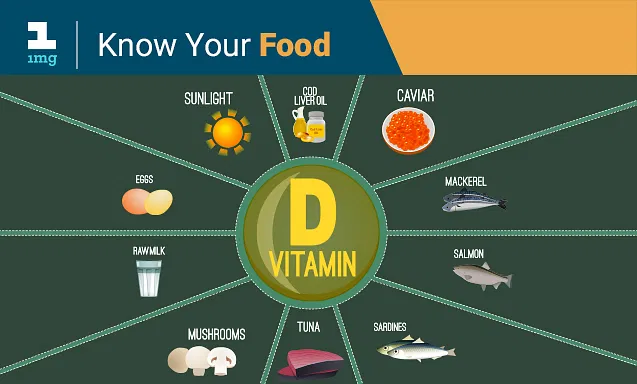
Effective Ways to Increase Vitamin D Levels Quickly
Many people in the U.S. have low vitamin D levels. The National Institutes of Health says almost one in four adults are affected. To fix this, changing your diet and getting more sun are key. Sometimes, injections are needed for quick results.
Dietary Changes and Sun Exposure
Eating certain foods can help boost vitamin D levels. Here are some good sources:
- Fatty fish like salmon, trout, tuna, and mackerel
- Fortified foods such as breakfast cereals, cow’s milk, and plant-based alternatives like almond and soy milk
- Maitake mushrooms which can provide up to 2,348 IU per serving
- Eggs from pasture-raised chickens
Getting more sun is also important. Just 5 to 30 minutes outside a day can help. But, darker skin types might need more time because melanin blocks sunlight.
When to Consider Injections or Infusions
If diet and sun aren’t enough, injections or infusions might be suggested. They’re good for those with very low levels. They help increase vitamin D levels quickly. The amount needed varies by age and health status.
| Group | Recommended Daily Allowance (RDA) (IU) |
|---|---|
| Children 1-18 years | 600 |
| Pregnant Women | 600 |
| Nonpregnant Adults up to 70 years | 600 |
| Adults over 70 years | 800 |
| Breastfed Infants (up to 12 months) | 400 |
For those who can’t absorb vitamin D well or need more, injections can help. They keep levels where they should be.
Vitamin D and Weight Management
Research has shown a link between vitamin D and weight management. Almost half of the world’s population lacks enough vitamin D. This lack can harm health, including increasing the risk of obesity.
Studies suggest that people who are overweight often have lower vitamin D levels. This could mean that keeping vitamin D levels up is key to managing weight.
A study found that women with enough vitamin D lost about 7 pounds more than those without. This shows vitamin D’s role in weight loss. It also found that vitamin D helps reduce body fat in overweight and obese women.
In older women, more vitamin D was linked to less weight gain. This suggests vitamin D helps protect against weight gain as we age. To keep vitamin D levels right, some might need to take more than the usual 4,000 IU per day. Always talk to a doctor before taking more than this.
Vitamin D might help with losing weight, reducing body fat, and stopping weight gain. It affects how fat cells are stored and boosts serotonin and testosterone. These hormones help with metabolism and body shape.
A study showed that Vitamin D3 helped overweight and obese women lose body fat. This shows its benefits for those struggling with obesity.
Vitamin D deficiency is common in obese people. Working on vitamin D levels could help with weight management. Vitamin D’s role in weight loss is important for improving health, especially for those with obesity.
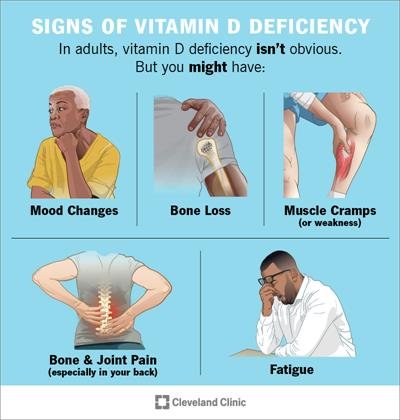
The Importance of a Balanced Diet for Vitamin D
A balanced diet is key to getting enough vitamin D. You need to eat foods rich in vitamin D. Fatty fish, fortified dairy, and egg yolks are great choices. They help keep your vitamin D levels up.
Eating right not only boosts vitamin D but also improves your health. It helps your bones and immune system. This is important for staying healthy and strong.
About 10 million Americans over 50 have osteoporosis. This shows how important vitamin D is for bones. Not getting enough can lead to weak bones and a higher risk of fractures.
Fortified foods and vitamin D sources are crucial. They help keep bones strong. Fractures from osteoporosis are more common than heart attacks and strokes.
For those with chronic conditions, vitamin D supplements can help. 40% of COPD patients see better lung function and quality of life. So, adding these supplements to your diet is a smart move for long-term health.








